

Articles
Why Does My Laundry Room Smell Musty
Modified: February 23, 2024
Discover effective articles explaining why your laundry room smells musty. Find practical solutions to eliminate the musty odor and keep your laundry room fresh.
(Many of the links in this article redirect to a specific reviewed product. Your purchase of these products through affiliate links helps to generate commission for Storables.com, at no extra cost. Learn more)
Introduction
Welcome to your ultimate guide on why your laundry room smells musty and how to get rid of the unpleasant odor. A musty smell in your laundry room can be quite frustrating, especially when you’re trying to keep your clothes fresh and clean. Luckily, there are several common causes of this issue, and even better, there are effective solutions to combat the musty smell.
In this article, we will explore the main culprits behind musty odors in laundry rooms and provide practical tips to eliminate the problem. Whether you’re dealing with high humidity levels, poor ventilation, dampness, mold, or a dirty washing machine, we’ve got you covered.
Unpleasant odors can affect not only your laundry but also the overall ambiance of your home. A musty smell is often associated with mold and mildew, which can be harmful to your health and cause respiratory problems. Therefore, understanding the causes of musty smells and taking proactive measures to tackle them is vital.
So, if you’re ready to say goodbye to that persistent musty smell in your laundry room, let’s dive into the common causes and effective solutions.
Key Takeaways:
- Say goodbye to musty laundry room odors by reducing humidity, improving ventilation, and eliminating dampness. Regular cleaning of appliances and addressing mold growth are essential for a fresh and inviting laundry space.
- Combat musty laundry room odors by addressing high humidity, poor ventilation, dampness, mold, and dirty appliances. Implement dehumidifiers, ventilation fans, and moisture-absorbing products for a fresh laundry experience.
Read more: Why Does My Air Conditioner Smell Musty
Common Causes of Musty Smells in Laundry Rooms
Musty smells in laundry rooms can be caused by a variety of factors. Identifying the root cause is essential in order to effectively eliminate the odor. Here are some of the most common culprits:
- High Humidity Levels: One of the primary reasons for a musty smell in the laundry room is high humidity. Moisture in the air can lead to the growth of mold and mildew, resulting in an unpleasant odor. If your laundry room lacks proper ventilation, it becomes a breeding ground for excess moisture.
- Poor Ventilation: Inadequate ventilation exacerbates the issue of high humidity. Without proper air circulation, the moisture from damp clothes and the heat produced by the washing machine and dryer get trapped in the room. This stagnant air creates a perfect environment for musty odors to develop and linger.
- Dampness and Moisture: Wet or damp areas in the laundry room can contribute to musty smells. Leaks from plumbing or appliances, water accumulation on the floor, or even clothes that have been left damp for too long can all be sources of excess moisture. If not addressed promptly, this dampness can lead to mold and mildew growth.
- Mold and Mildew Growth: Mold and mildew thrive in damp environments, making your laundry room an ideal breeding ground if moisture levels are not kept in check. These fungi not only cause unpleasant odors but can also pose health risks. Mold spores can be released into the air and inhaled, potentially triggering allergies and respiratory issues.
- Dirty Washing Machine or Dryer: Over time, residue from detergent, fabric softener, and lint can build up in your washing machine and dryer. This accumulation creates a perfect environment for bacteria, mold, and mildew to grow, resulting in musty smells. Regular cleaning and maintenance of your appliances are essential to prevent this buildup.
Now that we have identified the common causes of musty smells in laundry rooms, let’s move on to the solutions that will help you eliminate these odors for good.
High Humidity Levels
High humidity levels in your laundry room can be a major culprit behind the musty smell. When the air is saturated with moisture, it creates the perfect environment for mold and mildew to flourish. Excess humidity can result from various factors, including a lack of proper ventilation and damp clothes left to dry inside the room.
To tackle high humidity levels and eliminate the musty smell, follow these tips:
- Use a dehumidifier: Investing in a dehumidifier is an effective way to reduce humidity levels in your laundry room. This device helps extract excess moisture from the air, preventing the growth of mold and eliminating the musty odor. Place the dehumidifier in a central location in the room and empty the water tank regularly.
- Ventilate the room: Ensure that your laundry room has proper ventilation to allow humid air to escape and fresh air to circulate. Open windows when possible or install a ventilation fan to create a constant flow of air. This will help regulate humidity levels and prevent the buildup of musty odors.
- Avoid drying clothes indoors: If possible, avoid drying clothes inside the laundry room. Wet clothes release moisture into the air, contributing to higher humidity levels. Instead, utilize an outdoor clothesline or drying rack in a well-ventilated area. If indoor drying is necessary, consider using a vented dryer that releases the moist air outside.
- Install a laundry room exhaust fan: If your laundry room doesn’t have adequate ventilation, consider installing an exhaust fan. This will help remove moisture and humid air, reducing the likelihood of musty smells. Consult a professional if you’re uncertain about installing an exhaust fan on your own.
By addressing high humidity levels in your laundry room, you can significantly reduce the musty smell and create a more pleasant environment for doing laundry.
Poor Ventilation
Poor ventilation in your laundry room can contribute to the development of a musty smell. Insufficient airflow allows moisture, heat, and odors to accumulate, creating an environment perfect for mold and mildew growth. When stagnant air lingers, it can lead to unpleasant odors that are difficult to get rid of.
Here are some solutions to improve ventilation in your laundry room and eliminate the musty smell:
- Open windows and doors: One of the simplest ways to enhance airflow is by opening windows and doors in your laundry room. This allows fresh air to circulate and stagnant air to escape. If there are no windows or limited access to natural ventilation, consider keeping the door to the room open while doing laundry.
- Install a ceiling fan: Installing a ceiling fan in your laundry room can help improve air circulation. The fan will help move the stagnant air and prevent moisture from settling in one area. Set the fan to rotate counterclockwise in the summer to create a cooling breeze and clockwise in the winter to redistribute warm air.
- Use a portable fan: If a ceiling fan is not suitable for your laundry room, consider using a portable fan. Position the fan in a way that it directs the airflow towards the damp areas, such as near the washing machine or dryer. This will help dry the air faster and reduce the musty smell.
- Consider a ventilation system: If poor ventilation is a persistent issue in your laundry room, consider installing a ventilation system. This can be a simple exhaust fan or a more elaborate duct system that connects to the main ventilation system in your home. Consult a professional to determine the best solution for your specific situation.
By improving the ventilation in your laundry room, you can ensure proper airflow and prevent musty odors from lingering. Combining good ventilation practices with other solutions will help create a more pleasant and odor-free laundry room environment.
Dampness and Moisture
Dampness and moisture are common culprits behind musty smells in laundry rooms. Water leaks, damp clothes, and inadequate waterproofing can all contribute to the buildup of moisture in the room. When left unaddressed, this dampness provides the perfect breeding ground for mold and mildew, resulting in a persistent musty odor.
To eliminate dampness and moisture in your laundry room, consider the following solutions:
- Repair leaks: Check for any leaks in your laundry room, including plumbing pipes, faucets, and washing machine hoses. Repair any leaks immediately to prevent water from seeping into the room and causing dampness.
- Ensure proper drainage: Make sure that your washing machine and dryer are properly connected to the drainage system. Improper drainage can lead to water accumulation on the floor, contributing to overall dampness in the room.
- Use waterproofing measures: If your laundry room has issues with moisture seeping through walls or floors, consider using waterproofing techniques. Apply waterproofing paint or sealant to the walls and floors to create a barrier and prevent moisture from penetrating.
- Dry clothes properly: Avoid leaving damp clothes sitting in the laundry room for an extended period. Dry clothes promptly either using a dryer or by hanging them in a well-ventilated area. Hanging clothes in a separate designated room or outside will help prevent excess moisture in the laundry room.
- Use moisture-absorbing products: Place moisture-absorbing products, such as silica gel packets or moisture absorbers, in your laundry room. These products help absorb excess moisture in the air, reducing dampness and preventing the musty smell.
By addressing dampness and moisture issues in your laundry room, you can effectively eliminate musty odors and create a dryer and more pleasant environment for doing laundry.
Read more: Why Does My Air Conditioning Smell Musty
Mold and Mildew Growth
Mold and mildew are common causes of musty smells in laundry rooms. These fungi thrive in damp environments, making your laundry room an ideal breeding ground if moisture is present. Mold and mildew not only produce unpleasant odors but can also pose health risks. It is crucial to identify and address any mold or mildew growth to eliminate the musty smell and ensure a healthy environment.
Here are some steps to tackle mold and mildew growth in your laundry room:
- Inspect and clean affected areas: Regularly inspect all surfaces in your laundry room for signs of mold or mildew growth. Look for discolored or fuzzy patches on walls, ceilings, floors, and around appliances. If you spot any growth, clean the affected areas using a mixture of water and vinegar or a mild detergent. Use a scrub brush to remove the mold or mildew, and thoroughly dry the area afterward.
- Improve ventilation: As mentioned earlier, proper ventilation is crucial in preventing mold and mildew growth. Ensure that your laundry room has adequate airflow by opening windows, using fans, or installing a ventilation system. The increased air circulation will help keep the room dry and inhibit the growth of mold and mildew.
- Reduce humidity levels: High humidity levels contribute to the growth of mold and mildew. Use a dehumidifier to extract excess moisture from the air, especially in areas prone to dampness. Keeping the humidity levels in check will make it difficult for mold and mildew to thrive.
- Fix water leaks: Water leaks create a conducive environment for mold and mildew to grow. Regularly check for and fix any leaks in your laundry room. Inspect pipes, faucets, washing machine hoses, and the areas around them. Repairing leaks promptly will help prevent moisture buildup and subsequent mold growth.
- Keep the room clean and dry: Regularly clean your laundry room to prevent the accumulation of dirt, dust, and moisture. Pay attention to areas prone to moisture, such as the washing machine, dryer, and sink. Wipe down surfaces, ensure proper ventilation, and promptly dry any spills or wet areas.
By taking proactive measures to address mold and mildew growth, you can effectively eliminate the musty smell, improve air quality in your laundry room, and create a healthier environment.
Dirty Washing Machine or Dryer
A dirty washing machine or dryer can also contribute to a musty smell in your laundry room. Over time, residue from detergent, fabric softener, and lint can accumulate inside these appliances, creating an environment for bacteria, mold, and mildew to thrive. This buildup not only causes unpleasant odors but can also affect the cleanliness of your laundry.
To tackle the issue of a dirty washing machine or dryer and eliminate the musty smell, follow these steps:
- Clean the drum: Start by cleaning the drum of your washing machine. Run a cycle with hot water and add a cup of white vinegar to break down any built-up residue. Alternatively, you can use a washing machine cleaner specifically designed to remove odors and buildup. Wipe down the drum and door seal with a mixture of vinegar and water to eliminate any lingering odor-causing bacteria.
- Check and clean the filter: For top-loading washing machines, check the lint filter and remove any debris or lint that may have accumulated. Front-loading washing machines usually have a coin trap or access panel at the front bottom. Open it and clean out any debris or clogs. A clean filter ensures proper drainage and helps prevent mold and mildew growth.
- Clear the dryer vent: Lint buildup in the dryer vent can trap moisture and contribute to musty odors. Regularly clean the dryer vent to improve airflow and prevent the accumulation of lint. Disconnect the dryer from the power source, remove the vent hose, and clean it thoroughly. Use a vent brush or vacuum to remove lint from the vent and the back of the dryer.
- Wipe down surfaces: Clean the exterior surfaces of your washing machine and dryer with a mixture of vinegar and water. Pay attention to the control panels, knobs, and any other areas that may have collected dirt or grime. Regularly wiping down these surfaces will help prevent the growth of odor-causing bacteria.
- Leave the door open: After each use, leave the door of your washing machine and dryer open to allow moisture to evaporate. This helps prevent the buildup of mold and mildew inside the appliances. Do this especially if the laundry room has poor ventilation or high humidity levels.
By regularly cleaning your washing machine and dryer, you can eliminate odors and ensure that your laundry room smells fresh and clean.
To combat a musty smell in your laundry room, try using a dehumidifier to reduce moisture, regularly clean the washing machine and dryer, and consider using a natural odor absorber like baking soda or activated charcoal.
Solutions to Eliminate Musty Smells
To eliminate musty smells in your laundry room, it’s essential to address the underlying causes. By implementing the following solutions, you can effectively get rid of the unpleasant odor:
- Reduce Humidity Levels: Use a dehumidifier to extract excess moisture from the air, especially in humid environments. Additionally, open windows and install ventilation fans to improve airflow and reduce humidity.
- Improve Ventilation: Ensure proper ventilation in your laundry room by opening windows, using fans, or installing a ventilation system. Adequate airflow helps prevent the buildup of stagnant air and allows moisture to escape.
- Eliminate Dampness and Moisture: Check for and repair any water leaks in your laundry room. Properly ventilate and dry clothes either outside or using a vented dryer. Use moisture-absorbing products to prevent excess moisture in the air.
- Remove Mold and Mildew: Regularly inspect and clean your laundry room for any signs of mold or mildew growth. Clean affected areas with vinegar, a mild detergent, or a commercial mold and mildew cleaner. Improve ventilation and reduce humidity to discourage further growth.
- Clean Washing Machine and Dryer: Regularly clean the drum and door seal of your washing machine with white vinegar or a washing machine cleaner. Check and clean the filter or coin trap to ensure proper drainage and prevent odor-causing buildup. Clear the dryer vent of lint to improve airflow.
Implementing these solutions will not only eliminate musty smells but also create a fresh and pleasant environment in your laundry room. Regular maintenance and cleaning are key to preventing the recurrence of musty odors.
Remember, identifying the root cause is crucial for effective odor elimination. By combining these practical solutions with good laundry habits and proper maintenance, you can enjoy a clean and refreshing laundry room.
Reduce Humidity Levels
One of the primary causes of musty smells in the laundry room is high humidity. Excess moisture in the air can create the perfect breeding ground for mold, mildew, and bacteria, leading to an unpleasant odor. By taking steps to reduce humidity levels, you can effectively eliminate the musty smell and create a more comfortable environment in your laundry room. Here are some strategies to help you achieve this:
- Use a dehumidifier: Investing in a dehumidifier is an effective way to reduce humidity levels in your laundry room. These devices work by drawing moisture from the air, helping to prevent mold and mildew growth. Place the dehumidifier in a central location, and empty the water tank regularly to maintain its efficiency.
- Ventilate the room: Proper ventilation is key to reducing humidity. Open windows and doors to allow fresh air to circulate and stagnant air to escape. If your laundry room doesn’t have windows or sufficient natural ventilation, consider installing a ventilation fan to improve air circulation.
- Avoid drying clothes indoors: Drying clothes indoors can introduce excess moisture into your laundry room. Whenever possible, dry your clothes outside or in a well-ventilated area to prevent humidity buildup. If you must dry clothes indoors, use a vented dryer that releases moist air outside.
- Use air conditioning or fans: Air conditioning can help control humidity by cooling and dehumidifying the air. Running air conditioning units or fans in your laundry room can aid in reducing humidity levels. Ensure that the air conditioning unit is properly maintained and the filters are clean for optimal performance.
- Fix plumbing leaks: Water leaks in your laundry room can contribute to high humidity levels. Inspect and fix any leaking pipes, faucets, or washing machine hoses. Promptly repair any water damage to prevent ongoing moisture problems that can lead to musty odors.
- Use moisture-absorbing products: Moisture-absorbing products, such as silica gel packets or desiccant bags, can help reduce humidity in your laundry room. Place them in areas prone to dampness, such as near the washing machine or in closets, to absorb excess moisture and prevent musty odors.
By implementing these strategies to reduce humidity levels, you can effectively eliminate the musty smell in your laundry room. Remember to consistently monitor and maintain optimal humidity levels to prevent the return of excess moisture and the associated odors.
Read more: Why Does Basement Smell Musty
Improve Ventilation
Poor ventilation is another common factor contributing to musty smells in the laundry room. Inadequate airflow can lead to the accumulation of stagnant air and moisture, creating an ideal environment for the growth of mold, mildew, and bacteria. By improving ventilation, you can effectively eliminate the musty smell and create a fresher and more pleasant environment in your laundry room. Here are some effective strategies to enhance ventilation:
- Open windows and doors: One of the simplest ways to improve ventilation is by opening windows and doors in your laundry room. This allows fresh air to enter the space and stagnant air to be expelled. Whenever possible, create cross-ventilation by opening windows on opposite sides of the room to facilitate air movement.
- Install a ventilation fan: Consider installing a ventilation fan in your laundry room to enhance airflow. A ceiling-mounted or wall-mounted exhaust fan can effectively remove humid air and odors. Run the fan during and after doing laundry to ensure proper ventilation and to prevent the buildup of musty smells.
- Keep the door open: When using the washing machine or dryer, keep the laundry room door open to improve air circulation. This allows for better airflow and dispersal of moisture from the appliances. Leaving the door open also helps prevent the trapping of odors in the confined space of the laundry room.
- Clean vents and ducts: Regularly clean the vents and ducts in your laundry room to remove any obstructions that may impede airflow. Dust, lint, and debris can accumulate over time, reducing ventilation efficiency. Use a vacuum cleaner or a brush to clean vents and ensure that air can flow freely.
- Consider an exhaust system: In cases where natural ventilation is insufficient, you may need to consider installing an exhaust system. This involves ductwork that channels humid air and odors directly outside your home. Consult with a professional to determine the best exhaust system solution for your specific laundry room setup.
- Remove obstructions: Ensure that furniture, clothes, and other items are not blocking vents or obstructing airflow in your laundry room. Clear any clutter in the area to allow for unrestricted ventilation and better air circulation.
By implementing these strategies to improve ventilation, you can effectively eliminate musty smells in your laundry room. Adequate airflow will help prevent the accumulation of stagnant air, reduce moisture levels, and create a more pleasant and odor-free environment for doing laundry.
Eliminate Dampness and MoistureDampness and moisture are common culprits behind musty smells in laundry rooms. Excess moisture can create the perfect conditions for mold, mildew, and bacteria to thrive, leading to unpleasant odors. By implementing strategies to eliminate dampness and moisture, you can effectively get rid of the musty smell and create a fresher and more comfortable environment in your laundry room. Here are some effective solutions to tackle dampness and moisture:
- Repair leaks: Inspect your laundry room for any water leaks and promptly repair them. Check for leaking pipes, faucets, and washing machine hoses, and fix any issues to prevent water from seeping into the room and creating dampness.
- Improve drainage: Ensure that your washing machine and dryer are properly connected to the drainage system. Check for any blockages or clogs in the drainpipe or filter, and clear them to ensure proper water flow and prevent water accumulation in the laundry room.
- Enhance waterproofing: If your laundry room shows signs of moisture seeping through walls or floors, consider applying waterproofing measures. Use waterproofing paint or sealant on walls and floors to create a barrier and prevent further moisture penetration.
- Dry clothes properly: Properly drying clothes can help prevent excess moisture in the laundry room. Avoid leaving damp clothes inside the room for extended periods. Instead, use a vented dryer, hang clothes outside, or utilize a well-ventilated area to dry them quickly and efficiently.
- Use moisture-absorbing products: Place moisture-absorbing products, such as silica gel packets or moisture absorbers, in your laundry room. These products help absorb excess moisture in the air and prevent dampness. Position them in areas prone to moisture, such as near the washing machine or in closets.
- Improve ventilation: Proper ventilation is key to eliminating dampness and reducing moisture levels. Open windows and doors to increase airflow and allow for the exchange of humid air with fresh air. Additionally, use fans or install a ventilation system to improve air circulation and prevent the buildup of moisture.
By implementing these solutions to eliminate dampness and moisture, you can effectively get rid of the musty smell and create a dryer and more pleasant environment in your laundry room. Remember to address any water leaks promptly and maintain proper ventilation and drying practices for optimal results.
Remove Mold and Mildew
Mold and mildew are common causes of musty smells in laundry rooms. These fungi thrive in damp environments, and their presence not only leads to unpleasant odors but can also have negative effects on your health. To eliminate the musty smell and create a healthier environment, it’s essential to remove mold and mildew from your laundry room. Here are effective strategies to accomplish this:
- Inspect and identify: Regularly inspect your laundry room for any signs of mold and mildew growth. Look for dark spots, discoloration, or fuzzy patches on the walls, ceilings, floors, and around appliances. Identifying the areas affected by mold and mildew will help you target your cleaning efforts.
- Clean with vinegar or bleach: Vinegar and bleach are effective cleaners that can kill mold and mildew. Mix a solution of equal parts white vinegar and water, or use a diluted bleach solution, and apply it to the affected surfaces. Scrub gently with a brush to remove the mold and mildew, then rinse the area thoroughly.
- Dry and ventilate: After cleaning, ensure that the mold-affected areas are thoroughly dried. Open windows and doors or use fans to promote air circulation and aid in the drying process. Adequate ventilation is crucial in preventing the regrowth of mold and mildew.
- Dispose of contaminated items: If any clothing or other items in your laundry room have been affected by mold and mildew, consider disposing of them. Certain materials may be difficult to completely clean and may continue to contribute to the musty smell even after washing.
- Prevent regrowth: To prevent the regrowth of mold and mildew, it’s essential to address the underlying causes of dampness and moisture. Follow the strategies outlined earlier, such as repairing leaks, improving ventilation, and reducing humidity levels, to create an environment that is less favorable for mold and mildew growth.
- Maintain cleanliness: Regularly clean your laundry room to prevent the buildup of dirt, dust, and moisture that can contribute to mold and mildew growth. Wipe down surfaces, especially around the washing machine and dryer, to remove any traces of moisture or detergent residue.
By taking proactive measures to remove mold and mildew, as well as addressing the underlying causes, you can effectively eliminate the musty smell and create a healthier environment in your laundry room. Regular cleaning and maintenance will help prevent the recurrence of mold and mildew growth.
Clean Washing Machine and Dryer
A dirty washing machine or dryer can contribute to the musty smell in your laundry room. Over time, residue from detergent, fabric softener, and lint can accumulate inside these appliances, creating an environment for bacteria, mold, and mildew to thrive. To eliminate the musty smell and ensure the cleanliness of your laundry room, it’s essential to regularly clean your washing machine and dryer. Here’s how to do it effectively:
- Clean the drum: Start by cleaning the drum of your washing machine. Run a cycle with hot water and add a cup of white vinegar. This will help break down any buildup of detergent residue, oils, and odor-causing bacteria. For front-loading machines, wipe down the rubber door seal with a vinegar-water solution to remove any mold or mildew.
- Check and clean the filter: Top-loading machines often have a lint filter that needs regular cleaning. Locate the filter and remove any lint or debris that has accumulated. Front-loading machines typically have a coin trap or access panel at the front bottom. Open it and clean out any lint or objects that might be causing a blockage.
- Clean the detergent drawer: Remove the detergent drawer and clean it thoroughly. It’s common for detergent residue to build up in the drawer, which can contribute to the musty smell. Use warm water and a mild detergent to scrub away any buildup, and ensure that the drawer is completely dry before reinserting it.
- Clean the dryer vent: Lint buildup in the dryer vent can trap moisture and contribute to musty odors. Disconnect the dryer from the power source and remove the vent hose. Use a vent brush or vacuum cleaner to remove lint from both ends of the hose and the back of the dryer. Clearing the dryer vent will improve airflow and reduce the risk of fire hazards as well.
- Wipe down surfaces: Use a damp cloth or sponge to wipe down the exterior surfaces of your washing machine and dryer. Pay attention to control panels, knobs, and any other areas that may have collected dirt or grime. Remove any residue or buildup to prevent it from contributing to the musty smell.
- Leave the door open: After using the washing machine or dryer, leave the doors open to allow the appliances to air out. This helps prevent the growth of mold or mildew inside the machines and reduces the chances of a musty smell developing.
By regularly cleaning your washing machine and dryer and following these steps, you can effectively eliminate the musty smell and ensure the long-lasting freshness and cleanliness of your laundry room. A clean and well-maintained laundry appliance will not only contribute to an odor-free environment but also promote the longevity of your clothes.
Read more: Why Does AC Smell Musty
Conclusion
Dealing with a musty smell in your laundry room can be frustrating and unpleasant. However, by understanding the common causes of this issue and implementing effective solutions, you can eliminate the musty smell and create a fresh and inviting space for doing your laundry.
In this article, we explored the various sources of musty odors in laundry rooms, including high humidity levels, poor ventilation, dampness and moisture, mold and mildew growth, and a dirty washing machine or dryer. We provided practical strategies to address each of these causes, such as reducing humidity, improving ventilation, eliminating dampness, removing mold and mildew, and cleaning the appliances.
Reducing humidity levels through the use of dehumidifiers, proper ventilation, and drying clothes in well-ventilated areas can significantly decrease moisture in the air. Improving ventilation by opening windows, installing fans, and ensuring proper airflow prevents the buildup of stagnant air. Removing dampness and moisture can be achieved by fixing leaks, enhancing waterproofing, and using moisture-absorbing products.
Furthermore, eliminating mold and mildew involves inspecting, cleaning, and drying affected areas, as well as taking preventive measures to discourage regrowth. Lastly, regularly cleaning your washing machine and dryer, including the drum, filter, and detergent drawer, as well as clearing the dryer vent, helps maintain their efficiency and prevents the accumulation of odor-causing residue.
By implementing these solutions and maintaining good laundry practices, you can enjoy a fresh and odor-free laundry room. Remember to address the root causes of the musty smell and perform regular maintenance to prevent its recurrence. With a clean and inviting laundry room, you can ensure that your clothes come out smelling fresh and clean, enhancing your overall laundry experience.
Frequently Asked Questions about Why Does My Laundry Room Smell Musty
Was this page helpful?
At Storables.com, we guarantee accurate and reliable information. Our content, validated by Expert Board Contributors, is crafted following stringent Editorial Policies. We're committed to providing you with well-researched, expert-backed insights for all your informational needs.
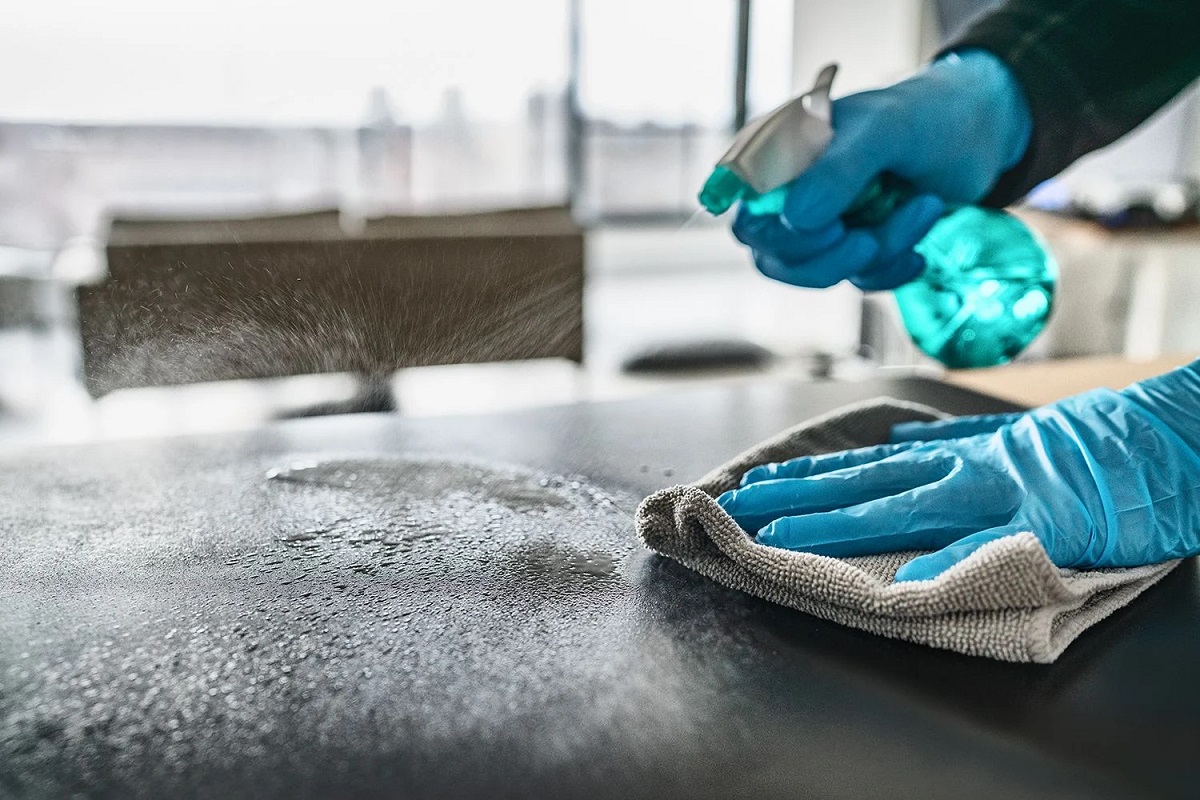
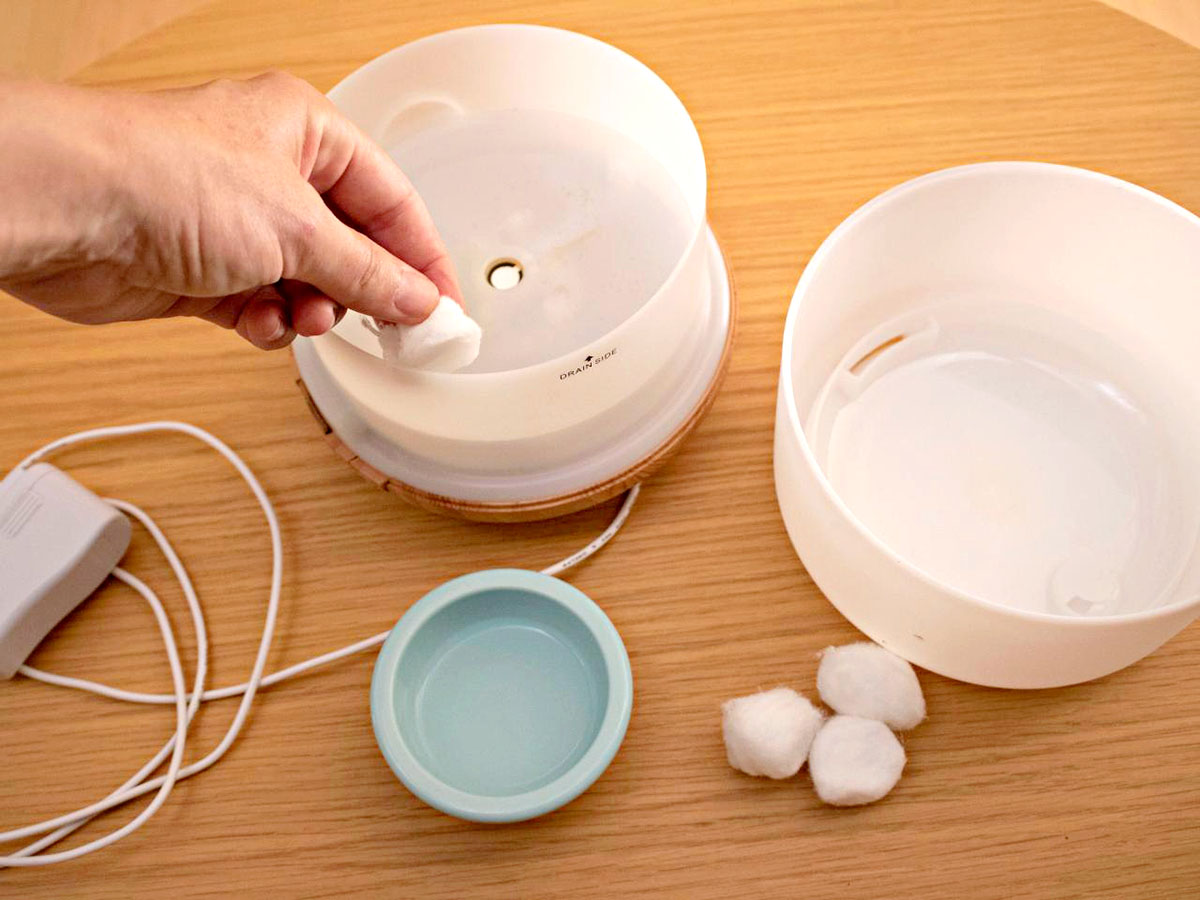

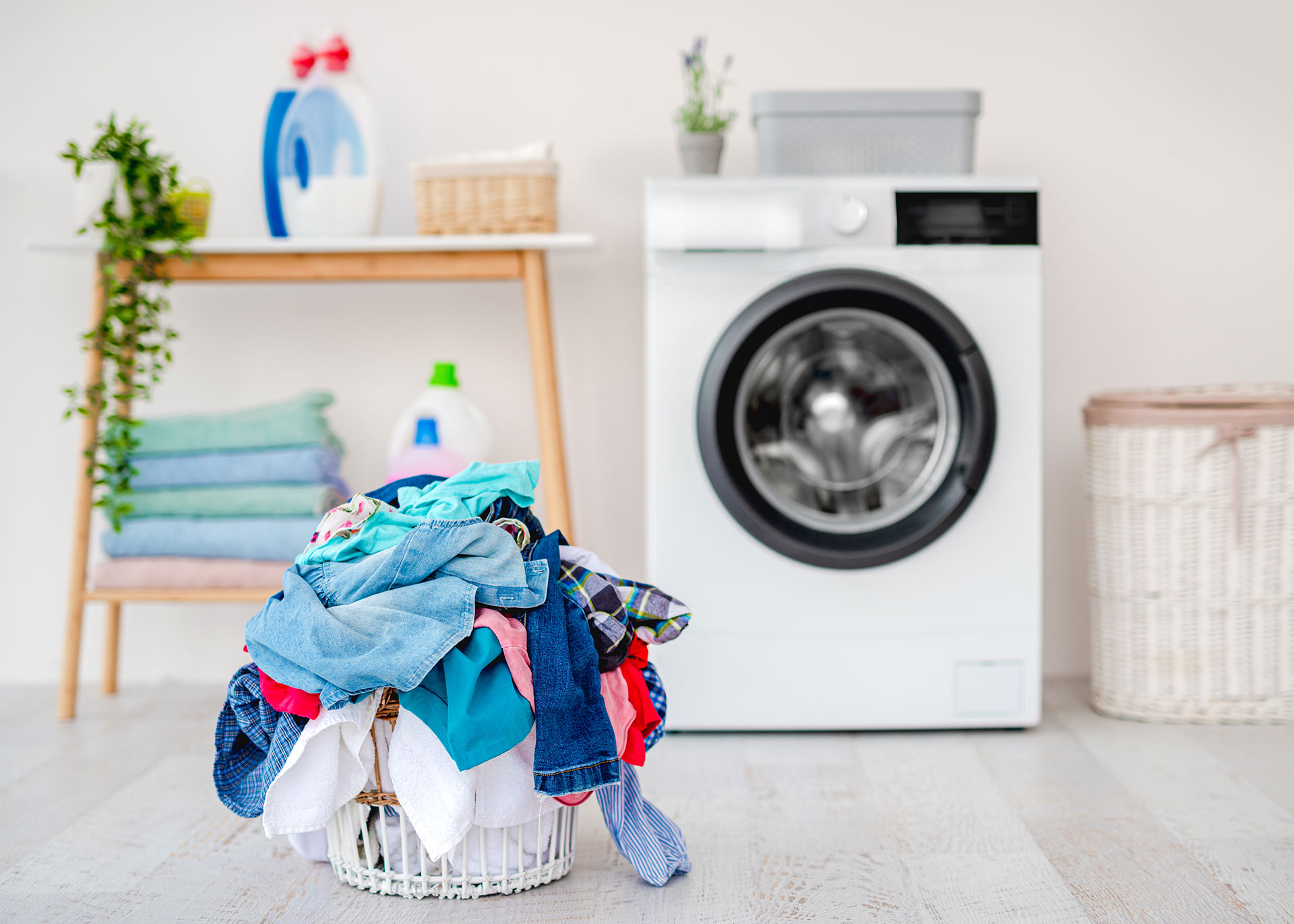

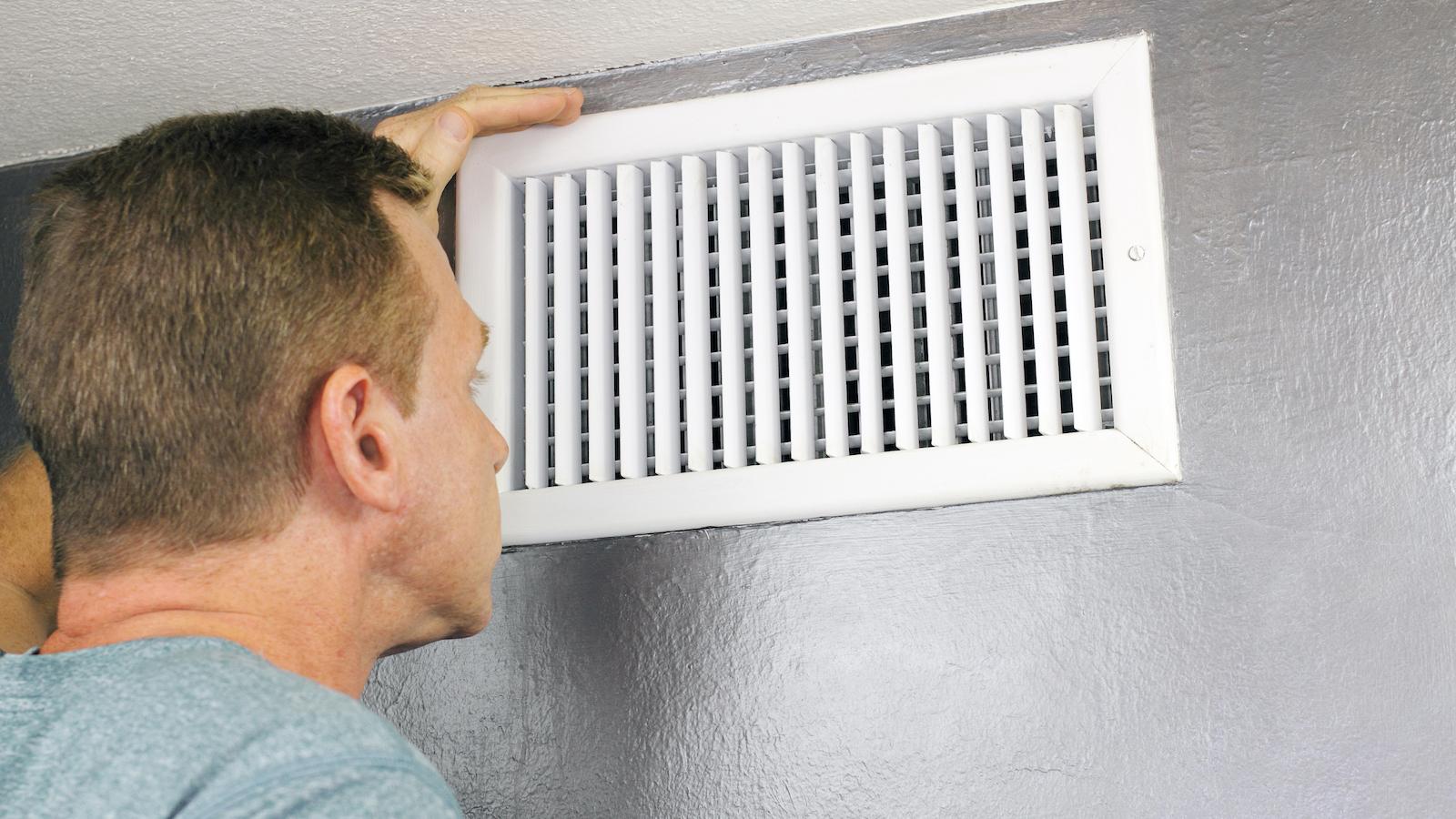
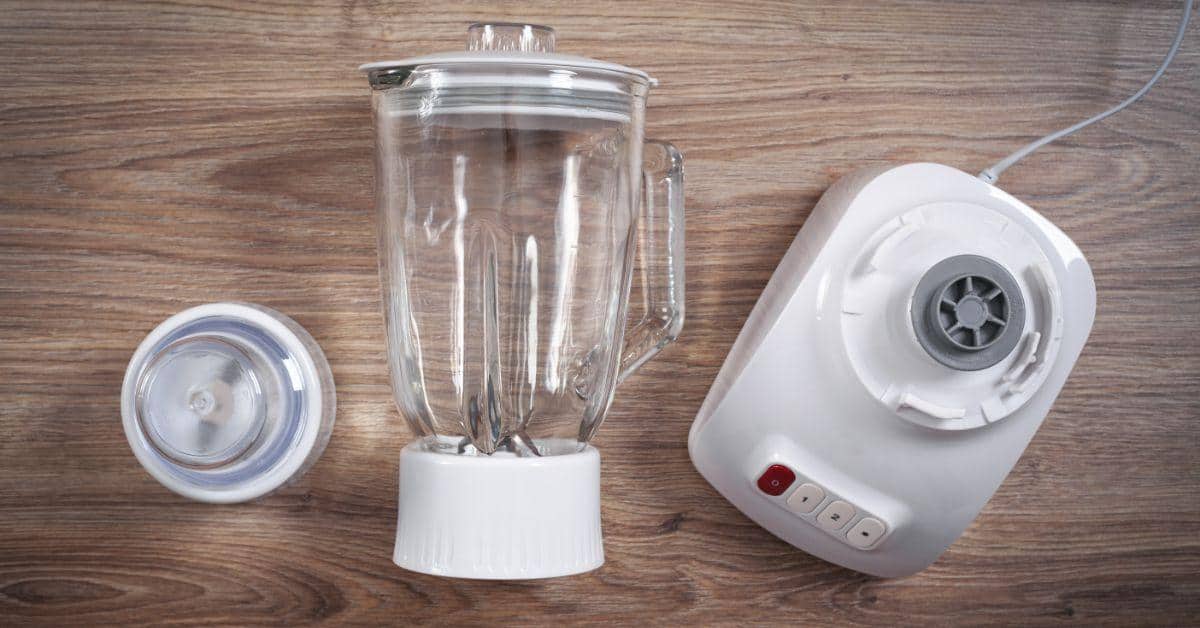

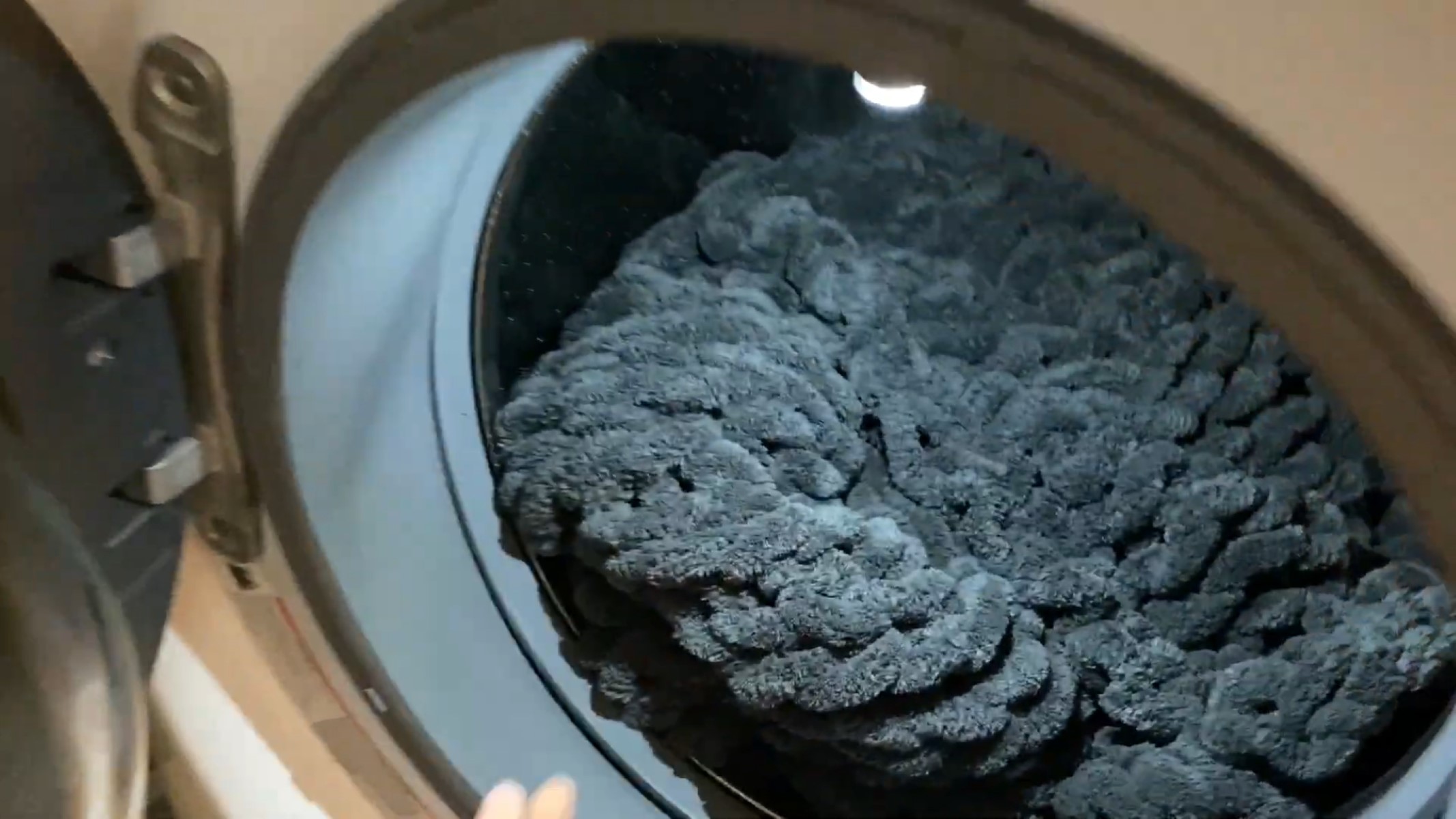


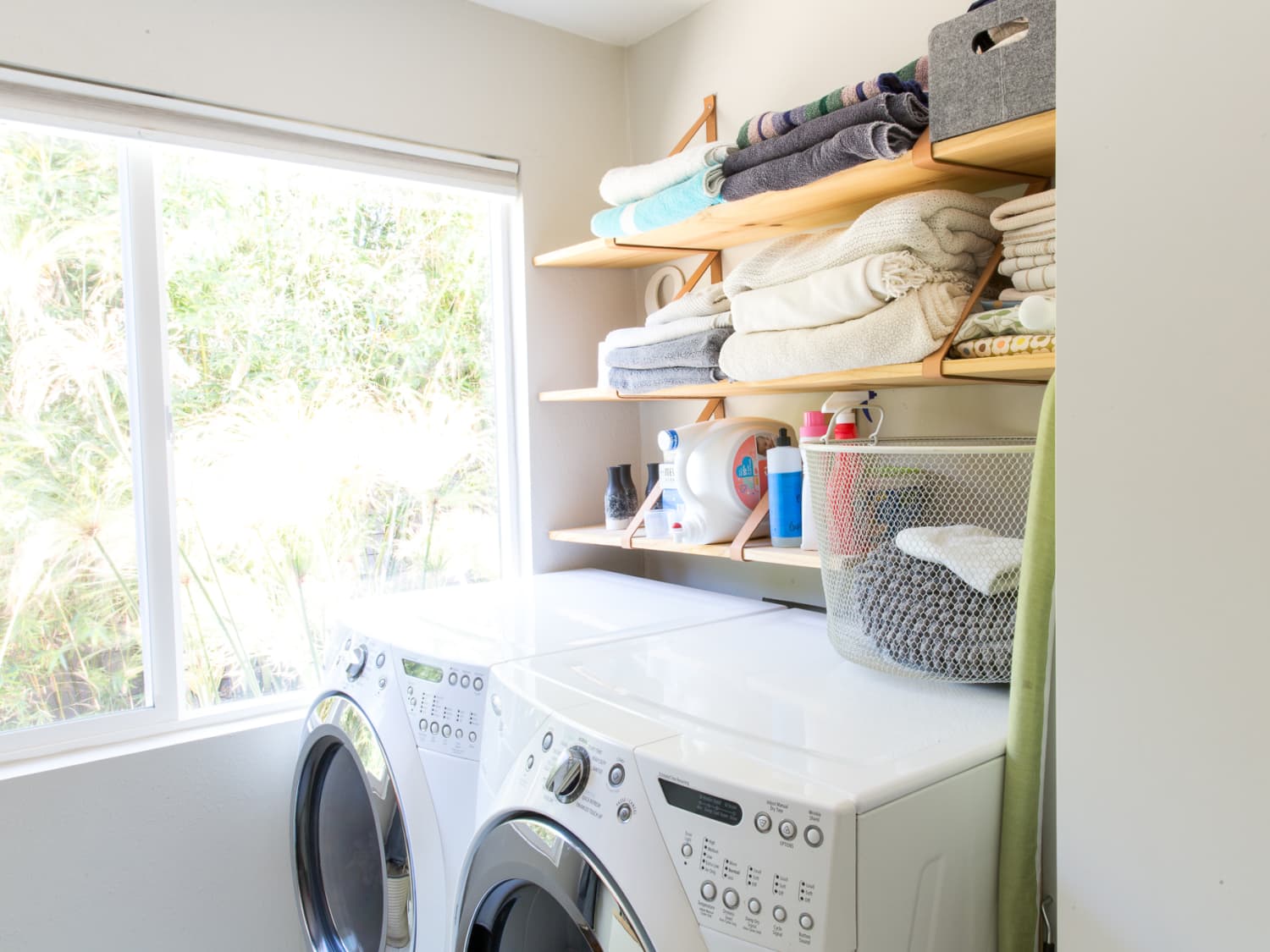

0 thoughts on “Why Does My Laundry Room Smell Musty”